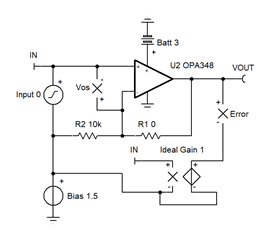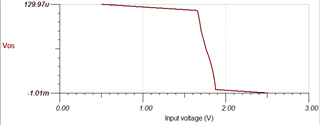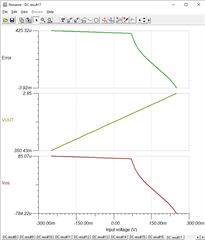Other Parts Discussed in Thread: TINA-TI
Hello
I would like to know how the common mode voltage impact the result.
I use a non-invert input circuit. So the common mode voltage could be considered as input voltage. The supply voltage is 3.3V. The signal is a 50Hz voltage signal with 1.5V bias.
Will the offset voltage change with input voltage?
Will the offset voltage multiplied by the gain?
Thanks!






